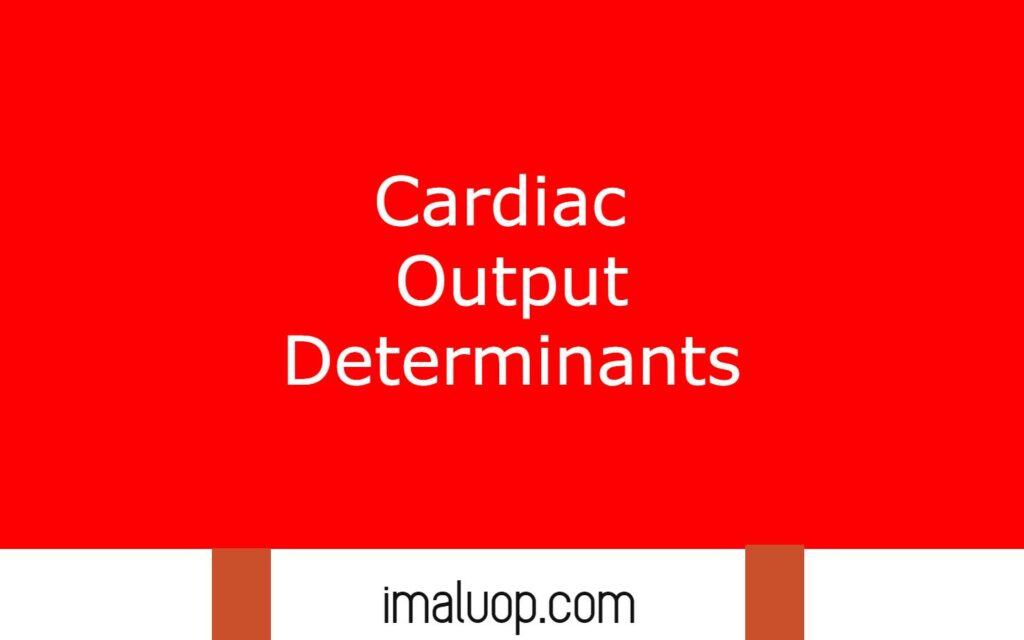Hi, now we are going to discuss cardiac output and cardiac output determinants which influence the cardiac output in a healthy person and we also discuss how we can calculate cardiac output and its normal value in a healthy person.
Table of Contents
What is Cardiac Output:
Our blood pumps blood at a constant rate in normal cases but when our heart does not work properly then its effect is reflected on the amount of blood they pump in a definite time span so the amount of blood pumped out by heart shows its efficiency.
The amount of blood pumped out by ventricle per minute is known as cardiac output and it is measured in the unit ml per minute which measures how millilitre of blood is pumped by the heart ventricle per minute and it gives us Idea about cardiac health.
How to Calculate Cardiac Output:
If you want to understand the calculation used for determination of cardiac output then you have to understand two other terms, heart rate and stroke volume which we will discuss now in detail then we’ll talk about the calculation of cardiac output.
Heart Rate:
It is the number of heart beats per minute and in a healthy person normal heart rate is 75 beats per minute but some factors which influence the heart beat positively are known as positive chronotropic factors while some factors decrease the normal heart rate and they are known as negative chronotropic factors.
Positive chronotropic factors which cause the heart beat more than 100 per minute are stimulation of the sympathetic nervous system increasing in secretion of adrenaline glands and the condition of more than 100 heart beats per minute is known as tachycardia.
When the negative chronotropic factors become more active like stimulation of the parasympathetic nervous system then our heart beat becomes less than 60 per minute and this condition is known as bradycardia which also influences the cardiac output negatively.
Stroke Volume:
It is the measurements of blood pumped during a single heart beat which is 70 millilitres per single heartbeat but it can be changed due to some factors like preload, contractility and afterload which we will discuss one by one below.
The amount of blood entering into the ventricles is known as preload and it impacts the cardiac output positively if other factors remain normal while afterload is the resistance the heart faces during the contraction of ventricular muscle.
The contractility is the effectiveness in heart contraction and how strongly the ventricles can contract depends upon some factors like, caffeine, sympathetic nervous stimulation and hypercalcemia increase the contractility while myocardial hypoxia, stimulation of parasympathetic nervous system, hypocalcemia, high potassium level cause decrease in contractility.
Calculation of Cardiac Output:
Now we know what is heart rate (HR) and what is stroke volume (SV), heart rate give us the number of heart beat per minute and stroke volume give us amount of blood pumped out by ventricle per minute so we can say that amount of blood pumped out by ventricle per minute, cardiac output (CO) = Heart Rate (HR) × Stroke Volume (SV).
In normal person heartbeat 72 time per minute and 70 ml of blood is pumped out by ventricle per minute so cardiac output for a normal healthy heart is (72×70) ml or 5040 ml or 5 little blood per minute and in practical its value present in the range 5 little to 6 litres of blood per minute so we can say that in one minute our heart circulate all the blood in our body.
Determinants of Cardiac Output:
Heart Rate:
Heart rate affects the cardiac output directly and the heart rate more is the cardiac output and positive chronotropic factors are responsible for high cardiac output while the negative chronotropic factors are responsible for low cardiac output.
Preload:
Preload is a regulatory factor of stroke volume while stroke volume again influences the cardiac output positively, more the preload more is stroke volume which refers to more cardiac output if other factors influencing the stroke volume remain constant.

Contractility:
Contractility affects stroke volume positively so in the presence of different inotropic factors which increase the contractility of the ventricle cause high cardiac output while the negative inotropic factors which decrease the contractility of ventricle cause decrease in stroke volume which decreases the cardiac output.
Read More: Blood Coagulation Process
Hi Everyone!!! Welcome to Imaluop. Imaluop always try to learn some new and he want to share to other people. Here we will try to learn various topics on Science, specially on Biological Sciences.
